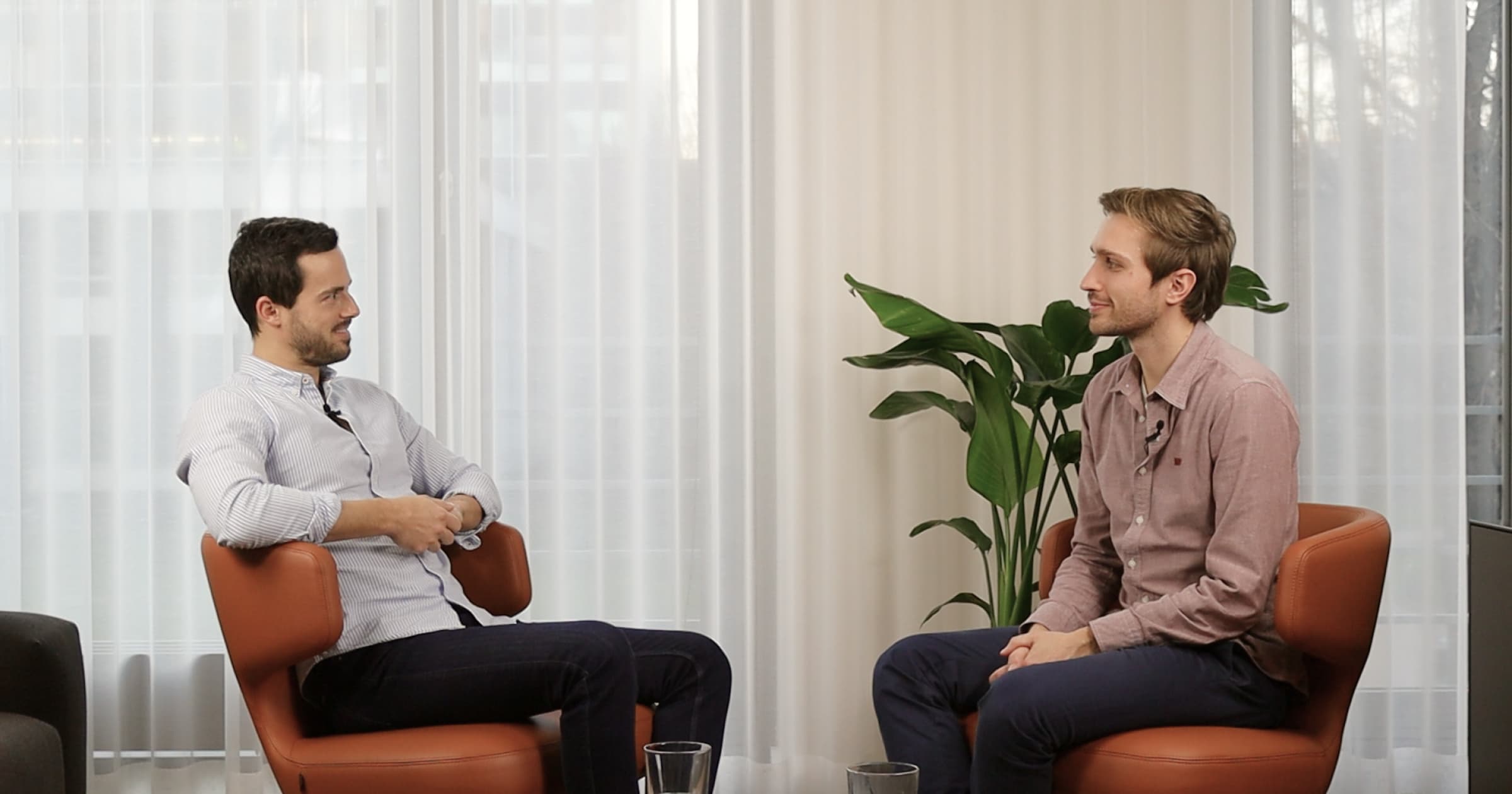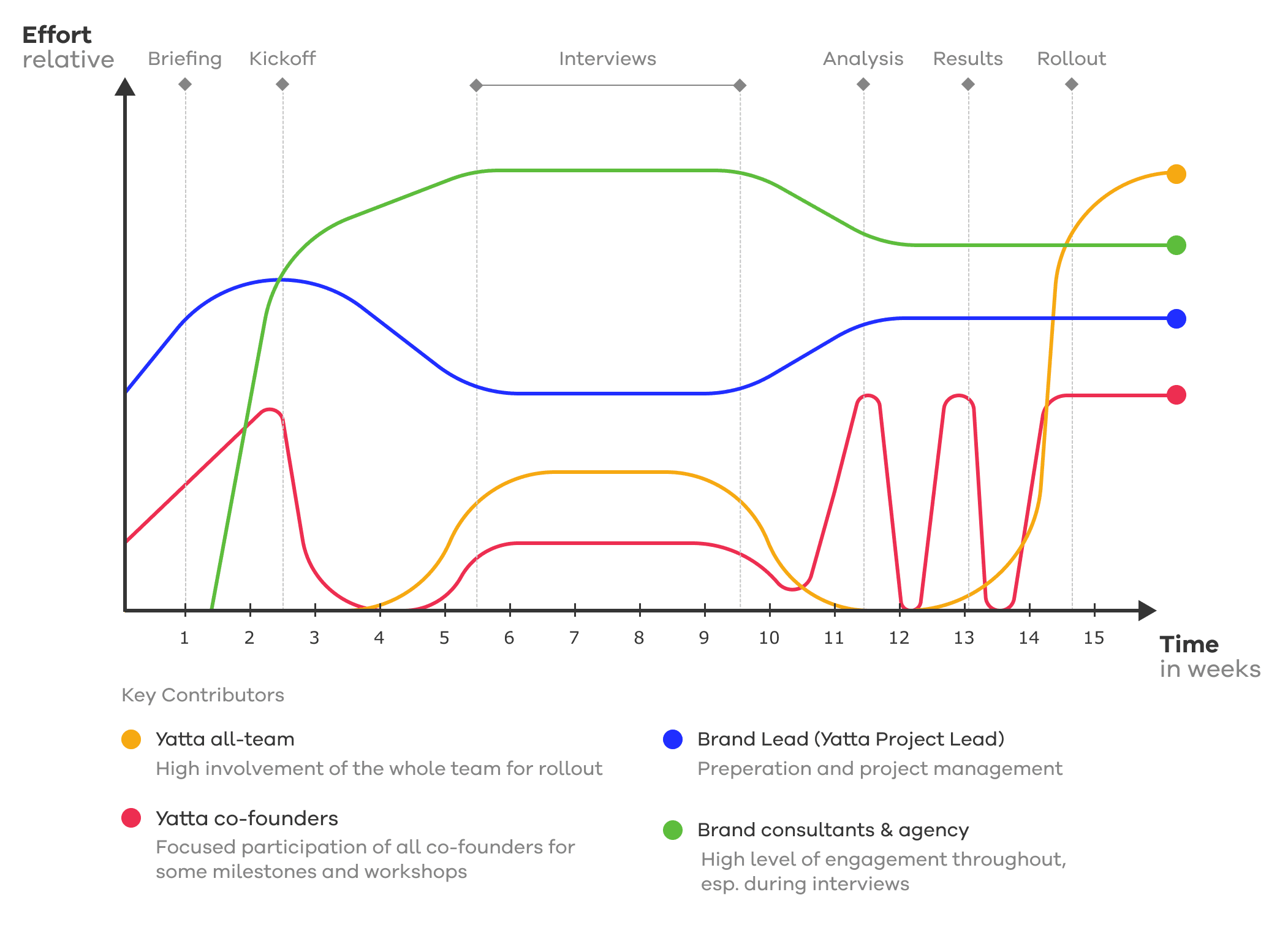Brand new – (Re-)shaping our company brand
Published
Published

When people hear the word “brand”, a logo is most likely the first thing they see in their mind’s eye. But while the logo may be the first part of a brand you think of, it’s far from the whole story.
Like the leaves on a tree, the logo is the most visible—and perhaps most characteristic—part of a company, but it needs a solid and sustainable support structure to thrive and prosper. For a tree, that support structure is its branches and roots. For a company it’s the brand that gives the company shape and character—and ideally serves as the company’s backbone: its vision, ambition and values.
To fulfil this purpose, a brand must reflect and represent what its company stands for, identifies with and aspires to. This also means that when—like us—you realize your company has evolved (and has grown in directions you did not expect at first), but your brand has no longer kept up with this development, you must adapt. Simply changing the logo won’t do the job, you have to dig deeper…
We’d like to share some insights about our rebranding journey—on how deep we have gone and what we have unearthed so far.
In enterprises, brand projects usually are part of a strategic plan. Their goal is to address new markets, change the company’s positioning, or simply adapt to the zeitgeist. However, we kind of slipped into our branding journey.
While working on our new product (which will be published soon), we started thinking about the required website. As we discussed the content, and the look and feel, it quickly became clear that our former design language and tone of voice—which hadn’t changed since the foundation of Yatta—just did not fit any longer.
So, it was finally time for something new! Until that moment, we hadn't thought about a new logo, font or designs—but it was clear that a new website for both the company and the product would better convey who we are as a team and organization.
We then took a step back and tried to understand the ideas and motivations behind Yatta and we concluded that we should write down the values we all share. To move forward, we needed to understand where we came from.
To achieve our set goals (and meet the quality standards we expect from ourselves), we soon realized that we needed some help…
There are a huge number of branding agencies. They all have their areas of expertise and unique angles. When you decide to involve one of them, it may at first glance be tempting to go for the big-name companies, simply because everybody knows them.
But there may in fact be more fitting options. To find the best one, think about the criteria that matter the most to you. The first may be how their approach to work matches and interacts with your own processes.
When we are working on a software development project, we remain in constant dialog with our clients, asking questions to figure out the root causes behind problems and do more than just ticking off tasks. We see project work as a collaborative process; something created with shared ownership and as equal partners. So, we sought out partners whose approach to their work is similar to our own.
It is also helpful to take a look at other companies your potential partners have worked with and the projects they have been involved in: Have they worked with companies you can relate to and whose external presence resonates with you? That’s a solid indicator that the agency is a good fit.
With these criteria in mind, we found a company that was open to our dialogic approach and had a track record that matched what we were looking for: Sasserath Visney Plus accompanied us on our branding journey. Despite our limited resources, Ursula and Marc made the effort to move beyond “tried and tested” templates to adapt their approach to our needs.
Marc says a well-designed brand combines two characteristics:
Distinctiveness: What distinguishes this brand from its competitors?
Performative consistency: How does the brand experience of all stakeholders—from employees to customers and users to the public—remain as free from contradictions as possible, and how does it support the company's vision, values and goals?
The natural place for us to start understanding where we came from was talking to the founders. After all, they first shaped the company’s reason for being with vision and purpose. We worked out the motivations and inspirations behind their actions, and the values and objectives they built the company around. And we tried to put that in clear and concise writing.
We continued by interviewing our teammates; we involved today’s fellow travelers but also as many alumni as we could get in front of a mic. We asked them why they joined us—or why they left us—thus broadening and challenging our previous findings about our internal views of our brand.
To add the important external view, we also involved our clients and users—asking them what they associate with our company and our services. We maintain close relationships with our customers (including many of our end-users), and we regularly test and query the quality of our services. But to have them look at our brand as a whole and give us feedback was new for all of us.
To ensure neutral and objective answers (and the quality of our findings), the interviews were conducted by Ursula and her team. All interviews were treated as confidential, and relevant quotes were anonymized. (For the best bons mots, Ursula later asked the participants if they were willing to disclose their origin. Many of these precious findings became part of our Culture Code—but we are getting ahead of ourselves…)
By the way, the internal guiding hand, organizer and lead behind our entire rebranding journey was (and is) our brand lead Artur. We took the time to chat with him, and we’d like to share the video with you here:
Watch the video to find out what Artur thinks about our brand and branding, and what he experienced while he walked us through our journey!
As with any startup or SME our branding resources were very limited: We had neither a standing branding team (except for Artur) nor any prior experience from previous rebrands or branding projects (besides the one during our seed and founding phase). Beyond that, budgets for agencies and other partners were as limited as the time our whole team could invest into the rebrand (despite the importance of the project). So, we had to allocate our financial and time resources efficiently.
The below graphic shows the time and effort we and Sasserath Visney Plus invested in the first four months of our rebranding.

Of course, our reshaped brand needs a new website, and must help us position our product and attract new talent. But the rebranding process has already done more than that… As we said above, branding helps articulate the identity of a company. Ideally, it also reinforces the culture the company is built upon. Both “identity” and “culture” have a wide range of meanings depending on the context in which they are used.
For branding, identity describes the combination of values and ideas that make a company this particular company—the things that distinguish it from others and make it unique.
Where identity focuses on what is expressed, culture looks at how this identity is expressed through consistent behavior. It focuses on the ways in which we communicate and interact with each other and others.
An effective brand helps to sharpen both the company’s identity and culture. But it is not just limited to mirroring them passively—it always responds to them. It focuses on different aspects and encourages people within companies to think about what their company identity and culture mean to them and their work.
To codify Yatta’s common understanding, we created our Culture Code. (Well…in fact, it felt more like we just put in writing what has always been there.)
The Culture Code collects our thoughts on how our core values shape our work and the way we work together. It provides us with a shared array of concepts and philosophies and a vocabulary for framing our ideas and sharing them with our teammates. It provides a set of guidelines for all of us—whether we have been with the company for years or just for a few days. This written document is also easy to transmit to fellow travelers we might encounter as we continue to grow.
And it provides guiding rails for the dynamic creativity of our ongoing work. Today, we have no doubt: The Culture Code helps us work and collaborate more effectively. It became a guide to and a benchmark for our actions.
Why should you invest in branding?
We invest in our brand for the same reason you prune a tree: to ensure it keeps growing according to your intentions and to ensure a rich harvest when the time is right. We are convinced that a company brand is stronger if it has been shaped by intent rather than chance, by dialog rather than accident.
Also, a strong brand is not something that you create and define once and then it’s done. Rather, a successful brand has a stable core and a dynamic periphery at the same time.
The core defines the values that are central to the company. The initial branding process ensures that these values are something the company’s stakeholders can agree on in the long run.
It is important that these values are stable, but not static. That means they are broad enough to generate new angles and to changes in the company's environment. Like the roots of a tree, they keep the brand anchored while still allowing it to wave and flourish.
A successful brand is more than just one shippable product. It’s a basis for current processes and an inspiration for new ones.
These processes sent us on our current journey.
And we look forward to sharing more insights with you as we go.
Feel free to contact us at info@yatta.de, on LinkedIn or X if you want to share your thoughts!
Share
See all